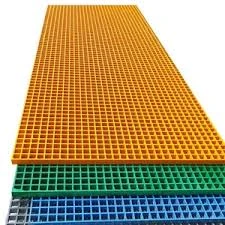
-
 Afrikaans
Afrikaans -
 Albanian
Albanian -
 Amharic
Amharic -
 Arabic
Arabic -
 Armenian
Armenian -
 Azerbaijani
Azerbaijani -
 Basque
Basque -
 Belarusian
Belarusian -
 Bengali
Bengali -
 Bosnian
Bosnian -
 Bulgarian
Bulgarian -
 Catalan
Catalan -
 Cebuano
Cebuano -
 China
China -
 China (Taiwan)
China (Taiwan) -
 Corsican
Corsican -
 Croatian
Croatian -
 Czech
Czech -
 Danish
Danish -
 Dutch
Dutch -
 English
English -
 Esperanto
Esperanto -
 Estonian
Estonian -
 Finnish
Finnish -
 French
French -
 Frisian
Frisian -
 Galician
Galician -
 Georgian
Georgian -
 German
German -
 Greek
Greek -
 Gujarati
Gujarati -
 Haitian Creole
Haitian Creole -
 hausa
hausa -
 hawaiian
hawaiian -
 Hebrew
Hebrew -
 Hindi
Hindi -
 Miao
Miao -
 Hungarian
Hungarian -
 Icelandic
Icelandic -
 igbo
igbo -
 Indonesian
Indonesian -
 irish
irish -
 Italian
Italian -
 Japanese
Japanese -
 Javanese
Javanese -
 Kannada
Kannada -
 kazakh
kazakh -
 Khmer
Khmer -
 Rwandese
Rwandese -
 Korean
Korean -
 Kurdish
Kurdish -
 Kyrgyz
Kyrgyz -
 Lao
Lao -
 Latin
Latin -
 Latvian
Latvian -
 Lithuanian
Lithuanian -
 Luxembourgish
Luxembourgish -
 Macedonian
Macedonian -
 Malgashi
Malgashi -
 Malay
Malay -
 Malayalam
Malayalam -
 Maltese
Maltese -
 Maori
Maori -
 Marathi
Marathi -
 Mongolian
Mongolian -
 Myanmar
Myanmar -
 Nepali
Nepali -
 Norwegian
Norwegian -
 Norwegian
Norwegian -
 Occitan
Occitan -
 Pashto
Pashto -
 Persian
Persian -
 Polish
Polish -
 Portuguese
Portuguese -
 Punjabi
Punjabi -
 Romanian
Romanian -
 Russian
Russian -
 Samoan
Samoan -
 Scottish Gaelic
Scottish Gaelic -
 Serbian
Serbian -
 Sesotho
Sesotho -
 Shona
Shona -
 Sindhi
Sindhi -
 Sinhala
Sinhala -
 Slovak
Slovak -
 Slovenian
Slovenian -
 Somali
Somali -
 Spanish
Spanish -
 Sundanese
Sundanese -
 Swahili
Swahili -
 Swedish
Swedish -
 Tagalog
Tagalog -
 Tajik
Tajik -
 Tamil
Tamil -
 Tatar
Tatar -
 Telugu
Telugu -
 Thai
Thai -
 Turkish
Turkish -
 Turkmen
Turkmen -
 Ukrainian
Ukrainian -
 Urdu
Urdu -
 Uighur
Uighur -
 Uzbek
Uzbek -
 Vietnamese
Vietnamese -
 Welsh
Welsh -
 Bantu
Bantu -
 Yiddish
Yiddish -
 Yoruba
Yoruba -
 Zulu
Zulu
Innovative Solutions for Storing Chemicals in FRP Tanks for Enhanced Safety and Efficiency
FRP Chemical Storage Tanks A Modern Solution for Industry Needs
In the ever-evolving landscape of industrial storage solutions, Fiber Reinforced Plastic (FRP) chemical storage tanks have gained significant traction due to their unique properties and advantages. These tanks are extensively used across various industries for the safe and efficient storage of corrosive chemicals, providing a modern alternative to traditional materials such as steel or concrete.
Understanding FRP Tanks
FRP tanks are made from a composite material that consists of a polymer matrix reinforced with fibers, typically glass or carbon. This composite structure endows the tanks with a range of beneficial properties, including strength, durability, and resistance to chemical corrosion. Unlike metal tanks, FRP tanks do not rust, corrode or degrade over time, which significantly extends their lifespan and reduces maintenance costs.
Chemical Resistance and Safety
One of the most compelling benefits of FRP chemical storage tanks is their exceptional chemical resistance. They are engineered to withstand a wide variety of harsh chemicals, including acids, alkalis, and solvents that would cause severe damage to traditional storage materials. This resistance not only protects the integrity of the tank itself but also ensures the safety of the surrounding environment and personnel. In industries where the risk of chemical spills and leaks is a major concern, the reliability of FRP tanks can be a game changer.
Furthermore, many FRP tanks are designed with secondary containment features, which provide an additional layer of protection against leaks and spills. This is particularly crucial for the storage of hazardous materials, as it helps to mitigate environmental risks and ensures compliance with safety regulations.
Lightweight and Versatile Design
frp chemical storage tanks

FRP tanks are significantly lighter than their steel or concrete counterparts, which simplifies transportation and installation. This lightweight nature does not compromise strength; instead, it allows for easier handling and can reduce the overall structural load on supporting foundations. The versatility in design also means that FRP tanks can be manufactured in various shapes and sizes to meet specific storage needs, making them suitable for a myriad of applications across industries, from wastewater treatment to chemical processing.
Customization and Performance
Another advantage of FRP tanks is their capacity for customization. Manufacturers can engineer tanks to specific design requirements, including varying wall thicknesses, insulation features for temperature-sensitive materials, and specialized coatings for additional chemical resistance. This customization ensures optimal performance in specific operational contexts, enhancing both efficiency and safety.
Cost Efficiency and Longevity
While the initial cost of FRP chemical storage tanks may be higher than that of traditional options, the long-term savings are substantial. The reduced need for maintenance, coupled with the extended lifespan of these tanks, often results in lower overall ownership costs. Furthermore, their resistance to corrosion and damage means that facilities can avoid the costs associated with leaks, spills, and the resulting environmental cleanup.
Conclusion
In conclusion, FRP chemical storage tanks represent a significant advancement in industrial storage solutions. Their unique combination of chemical resistance, lightweight design, and customizability make them an ideal choice for industries dealing with hazardous materials. As environmental concerns and safety regulations continue to tighten, the adoption of FRP tanks is likely to grow, offering facilities a reliable and cost-effective way to manage chemical storage needs while safeguarding the environment. By choosing FRP, industries can not only enhance operational efficiency but also contribute to a sustainable future.
Latest news
-
Exploring the Benefits of Top Hammer Drifter Rods for Enhanced Drilling PerformanceNewsJun.10,2025
-
High-Precision Fiberglass Winding Machine for GRP/FRP Pipe Production – Reliable & Efficient SolutionsNewsJun.10,2025
-
FRP Pipes & Fittings for Shipbuilding - Corrosion-Resistant & LightweightNewsJun.09,2025
-
Premium FRP Flooring Solutions Durable & Slip-ResistantNewsJun.09,2025
-
Premium Fiberglass Rectangular Tanks Durable & Lightweight SolutionNewsJun.09,2025
-
Tapered Drill String Design Guide Durable Performance & UsesNewsJun.09,2025









